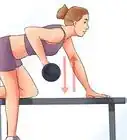This article was co-authored by Laila Ajani and by wikiHow staff writer, Sophia Latorre. Laila Ajani is a Fitness Trainer and founder of Push Personal Fitness, a personal training organization based in the San Francisco Bay Area. Laila has expertise in competitive athletics (gymnastics, powerlifting, and tennis), personal training, distance running, and Olympic lifting. Laila is certified by the National Strength & Conditioning Association (NSCA), USA Powerlifting (USAPL), and she is a Corrective Exercise Specialist (CES).
There are 10 references cited in this article, which can be found at the bottom of the page.
This article has been viewed 391,789 times.
Dumbbells are a great way to strengthen and tone your back. You can work your back with two dumbbells on their own or incorporate a bench to add versatility to your routine. Start with lighter dumbbells before moving on to heavier ones. Be sure to pay attention to your form to avoid injury. Ask a trainer for tips or exercise with a friend to keep things fun and fresh.
Steps
Lifting Dumbbells for Back Work
-
1Do a dead lift.[1] Hold a dumbbell in each hand while standing up straight. Bend your knees, keeping your back straight, and lower the dumbbells to the floor. After a short pause, raise yourself back up.[2]
- This is one of the most efficient dumbbell exercises because it works both your back and other muscle groups.
- You can also adapt this exercise into the stiff-legged dead lift by bending at the waist to lower the dumbbells to the ground and then straightening after a brief pause.[3]
-
2Do a bent-over row. Stand up with your knees slightly bent, and reach down to hold a dumbbell in each hand. Then, lift the dumbbells up until your upper arms are parallel with your torso. Hold for a short time and lower them again. Keep your back straight throughout this exercise – you should only be moving your arms.[4]Advertisement
-
3Do a wide row. Take a dumbbell in each hand, bend your knees slightly, and lean over at the waist. Then, lift both dumbbells at the same time toward your chest without changing the angles of your hips and knees. Your arms should be a bit more than shoulder-width apart. Hold the dumbbells for a moment once they’re about even with your chest, and then lower them. Breathe out when lifting and inhale when you return to the starting position.[5] [6]
-
4Try a palms-in shoulder press. Stand up and hold one dumbbell in each hand at shoulder level. Keep your palms facing each other. Push the dumbbells up toward the sky until your arms are straight. After a brief pause, lower the dumbbells to resting position at shoulder level.[7] .
- Be careful that you don’t jerk your back during this exercise – your arms and shoulders should be doing the lifting work.
-
5Hold dumbbells while doing squats.[8] Hold one dumbbell in each hand, and begin with your feet shoulder-width apart. Bend your knees and hips until your thighs are parallel to the floor. Lift both dumbbells straight up to your chest and then lower them (after a pause) without changing the angles of your body. Return to the starting position and repeat.[9]
- Be sure to exhale when you lift the dumbbells and inhale when returning to a resting position.
Adding Benches to Your Workout
-
1Do a seated palms-in alternated shoulder pass. Hold one dumbbell at shoulder level and one dumbbell extended toward the sky. Be sure that your palms are facing each other. While sitting on a bench, bring the elevated dumbbell down to your shoulder. Raise the other dumbbell to the sky.[10]
- After a brief pause, bring the dumbbell back to your shoulder and lift the other dumbbell to the sky. Alternate each arm, lifting and lowering one dumbbell at a time.
-
2Try a kneeling one-arm row. Rest your right hand and bent right knee on a bench. Grab a dumbbell with your left hand, and using your left leg for balance, lift the dumbbell up toward your torso. Lower it back down after a brief pause. After five to ten repetitions, switch to your left arm and knee on the bench.[11]
- You can also adapt this exercise into the one-arm row by resting one hand on a bench, standing with both feet on the ground, and lifting the dumbbell toward your torso.[12]
-
3Do a back fly. Lay on a bench on your chest and stomach and grab a dumbbell with each hand. Straighten your elbows until your arms are parallel to the ground. After a short pause, lower the dumbbells back to the ground.[13]
- It’s easier on your arms to use lighter dumbbells for this exercise. Also be sure to exhale when you lift the dumbbells and inhale when returning to a resting position.
- You can also try a variation on the back fly. Take a dumbbell in each hand and stand up. Let your arms hang down at your hips with your palms facing out. Now, keeping your arms straight, raise the dumbbells out from this hanging position until they are parallel to your ears. Briefly hold and lower the dumbbells.
-
4Work your rotator cuffs. Lie on your side along the bench. Hold a dumbbell between 2 to 20 pounds with your top arm at a 90-degree angle, palm facing in. Slowly, keeping the elbow tight at your side, open your arm outward as far as your range of motion allows. Return to the starting position, repeat for 2 sets of 10 reps, and then switch arms.[14]
- This is an “outward” rotation. Once you’ve done enough outward sets, you’re going to want to reverse the move to do “inward” rotations. Bring the same left arm into the same 90-degree starting position. This time, slowly bring the weight inward toward your waist. Return to the start, aiming for 2 sets of 10 reps for each side.
- Make sure to use slow and controlled movements when doing this exercise. Don’t throw the weight or use jerky motions.
- You can also do these rotations standing with a cable or resistance band, tied securely at elbow level.[15]
Using Dumbbells Safely
-
1Wear the right clothing. Wear workout clothes that give your body a full-range of motion. Pick an outfit that fits well but is not too tight. Usually, loose-fitting comfortable gym clothes work. Choose fabric that wicks away moisture, rather than wearing your old cotton t-shirt and sweats.[16]
- It’s always important to wear closed-toe athletic shoes that fit well. Keep them tied tightly, as loose laces pose a risk of injury.
-
2Start with light dumbbells. If you’re a beginner, start with light dumbbells. Dumbbells weighing 2-5 kg (4.4-11.0 lbs) are best for beginners. Slowly work your way up to heavier dumbbells over the course of several weeks. For example, increase the weight of the dumbbells after using them in your work out two times a week for four weeks.[17]
- If you are pregnant or have a history of back or joint problems, talk to your doctor about safe lifting limits.[18]
-
3Warm up before lifting heavy dumbbells. It’s important to give your body some time to warm up and to limber your joints before burdening them with heavy weights. Try working with lighter dumbbells for 5 to 10 minutes before switching to heavier dumbbells for the remainder of your workout.[19]
-
4Perfect your form. Poor posture or straining during lifting can cause severe injury. Try to avoid jerking your arms or back (or the dumbbells themselves) when you’re lifting. If you’re ever unsure of proper form and position, talk to a trainer or staff member at the gym. Ask them to demonstrate the moves or adjust your form while you are exercising.[20]
- You can also watch instructional videos online for help.
-
5Quit when you’re tired. If you start to strain or huff and puff, it’s time to set the dumbbells down. You’re more likely to get injured lifting dumbbells when you’re tired because your muscles or joints can give out under the weight.[21]
-
6Work out with a buddy. It’s safer (and usually more fun!) having a buddy to work out with. Lifting dumbbells is particularly dangerous when you’re lifting alone because you don’t have anyone to take the weight from you or monitor your physiology if you run into trouble.[22]
Expert Q&A
-
QuestionWhat are easy exercises for my back?
 Laila AjaniLaila Ajani is a Fitness Trainer and founder of Push Personal Fitness, a personal training organization based in the San Francisco Bay Area. Laila has expertise in competitive athletics (gymnastics, powerlifting, and tennis), personal training, distance running, and Olympic lifting. Laila is certified by the National Strength & Conditioning Association (NSCA), USA Powerlifting (USAPL), and she is a Corrective Exercise Specialist (CES).
Laila AjaniLaila Ajani is a Fitness Trainer and founder of Push Personal Fitness, a personal training organization based in the San Francisco Bay Area. Laila has expertise in competitive athletics (gymnastics, powerlifting, and tennis), personal training, distance running, and Olympic lifting. Laila is certified by the National Strength & Conditioning Association (NSCA), USA Powerlifting (USAPL), and she is a Corrective Exercise Specialist (CES).
Fitness Trainer If you want to strengthen your lower back, try doing deadlifts. Bend forward at the hips and pick your dumbbells off of the ground. Bend back up and straighten your legs until you're standing up. Then slowly lower the dumbbells back down to the ground.
If you want to strengthen your lower back, try doing deadlifts. Bend forward at the hips and pick your dumbbells off of the ground. Bend back up and straighten your legs until you're standing up. Then slowly lower the dumbbells back down to the ground. -
QuestionCan you build muscle mass with dumbbells?
 Michele DolanMichele Dolan is a BCRPA certified Personal Trainer in British Columbia. She has been a personal trainer and fitness instructor since 2002.
Michele DolanMichele Dolan is a BCRPA certified Personal Trainer in British Columbia. She has been a personal trainer and fitness instructor since 2002.
Certified Fitness Trainer Yes, lifting dumbbells through various movements will build muscle in different places.
Yes, lifting dumbbells through various movements will build muscle in different places. -
QuestionHow do you work out your back?
 Michele DolanMichele Dolan is a BCRPA certified Personal Trainer in British Columbia. She has been a personal trainer and fitness instructor since 2002.
Michele DolanMichele Dolan is a BCRPA certified Personal Trainer in British Columbia. She has been a personal trainer and fitness instructor since 2002.
Certified Fitness Trainer There are several exercises you can try. As an example, bent over rows, bent over flyes, and deadlifts all work the back muscles.
There are several exercises you can try. As an example, bent over rows, bent over flyes, and deadlifts all work the back muscles.
References
- ↑ Laila Ajani. Fitness Trainer. Expert Interview. 31 October 2019.
- ↑ https://dumbbell-exercises.com/exercises/dumbbell-back-exercises/
- ↑ https://dumbbell-exercises.com/exercises/dumbbell-back-exercises/
- ↑ https://dumbbell-exercises.com/exercises/dumbbell-back-exercises/
- ↑ https://dumbbell-exercises.com/exercises/dumbbell-back-exercises/#1
- ↑ https://www.spotebi.com/exercise-guide/wide-row/
- ↑ https://dumbbell-exercises.com/exercises/shoulders/
- ↑ Laila Ajani. Fitness Trainer. Expert Interview. 31 October 2019.
- ↑ https://dumbbell-exercises.com/exercises/dumbbell-back-exercises/
- ↑ https://dumbbell-exercises.com/exercises/shoulders/
- ↑ https://dumbbell-exercises.com/exercises/dumbbell-back-exercises/
- ↑ https://dumbbell-exercises.com/exercises/dumbbell-back-exercises/
- ↑ https://dumbbell-exercises.com/exercises/dumbbell-back-exercises/
- ↑ https://www.muscleforlife.com/rotator-cuff-exercises/
- ↑ http://www.independentfemme.com/rotator-cuff-exercise-for-strength-and-injury-prevention/
- ↑ https://manofmany.com/fashion/mens-fashion-advice/best-workout-gear
- ↑ http://www.netdoctor.co.uk/healthy-living/fitness/a5100/beginners-guide-to-weight-training/
- ↑ https://www.bodybuilding.com/fun/hugo34.htm
- ↑ https://www.bodybuilding.com/fun/hugo34.htm
- ↑ https://www.bodybuilding.com/fun/hugo34.htm
- ↑ https://www.bodybuilding.com/fun/hugo34.htm
- ↑ https://www.bodybuilding.com/fun/hugo34.htm
About This Article
To work out your back with dumbbells, stand up straight while holding them, then bend your knees, keep your back straight, and lower the dumbbells to the floor. Pause briefly before raising yourself back up to complete a dead lift. You can also do a bent-over row by standing with your knees bent, reaching down to grab the dumbbells, and lifting them so your upper arms are parallel with your torso. Then, pause briefly before returning to your starting position. Alternatively, lift the dumbbells up to your chest, then lower them as you do squats. For tips from our Fitness reviewer on how to protect your form while lifting with progressively heavier weights, read on!
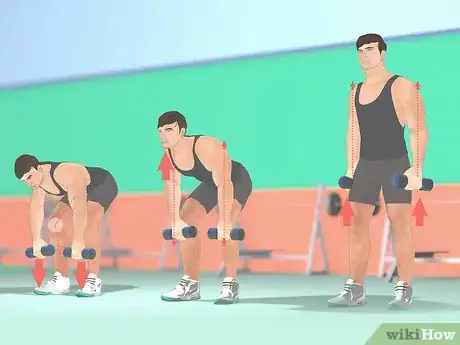

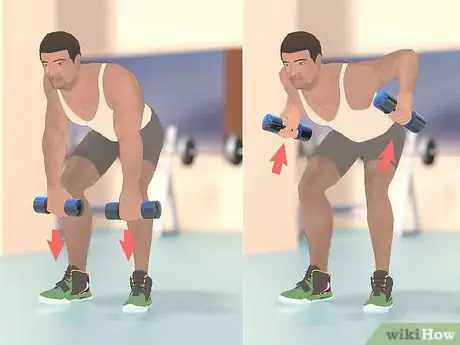
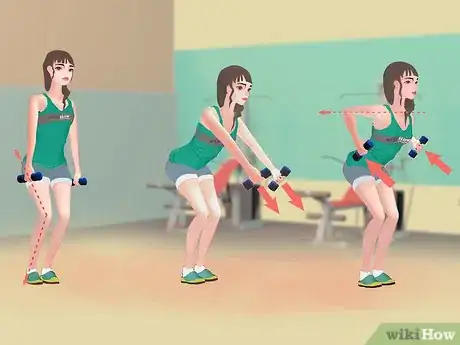
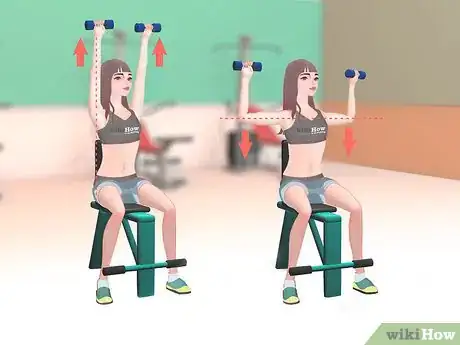

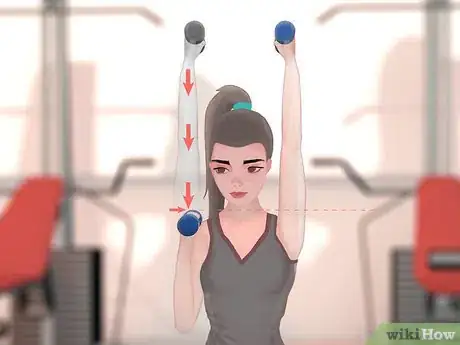
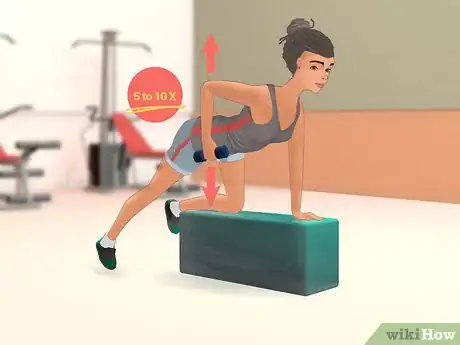

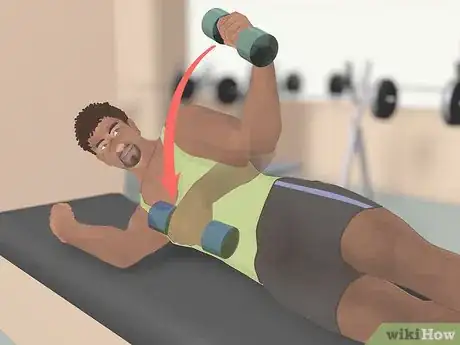

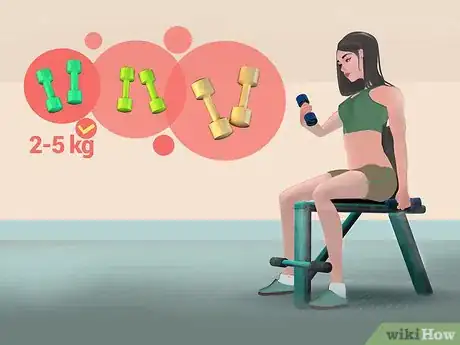
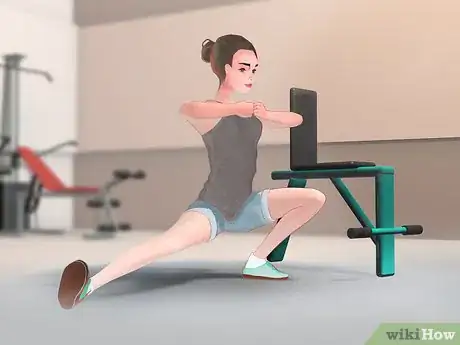



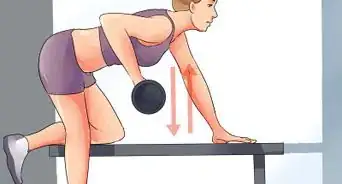



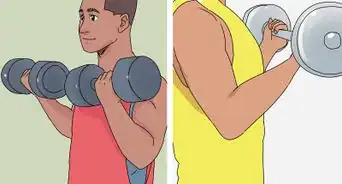

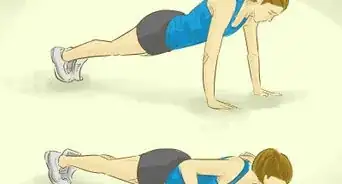
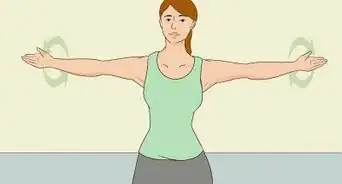
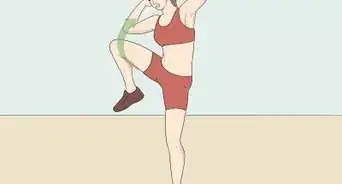
-Step-10-Version-5.webp)







